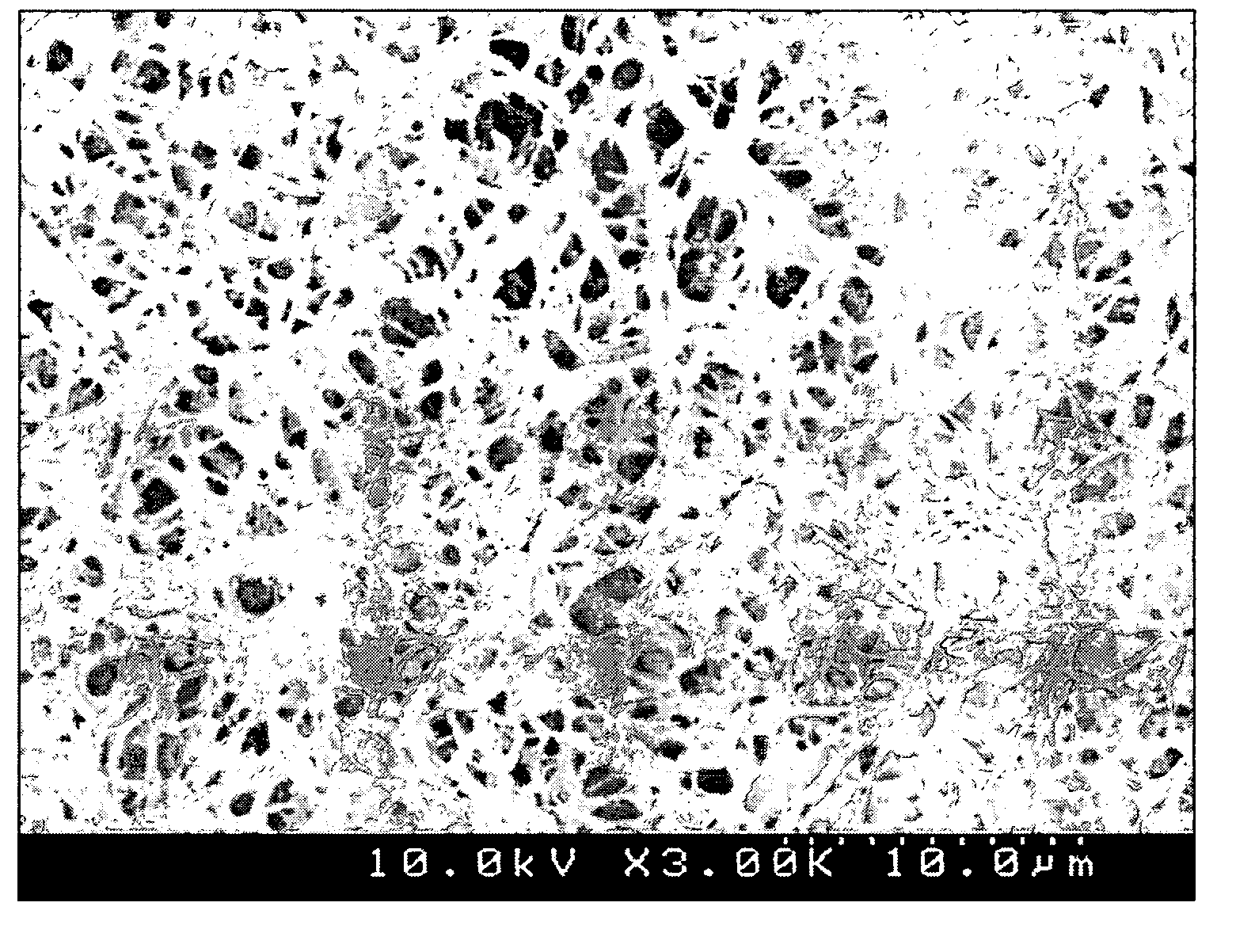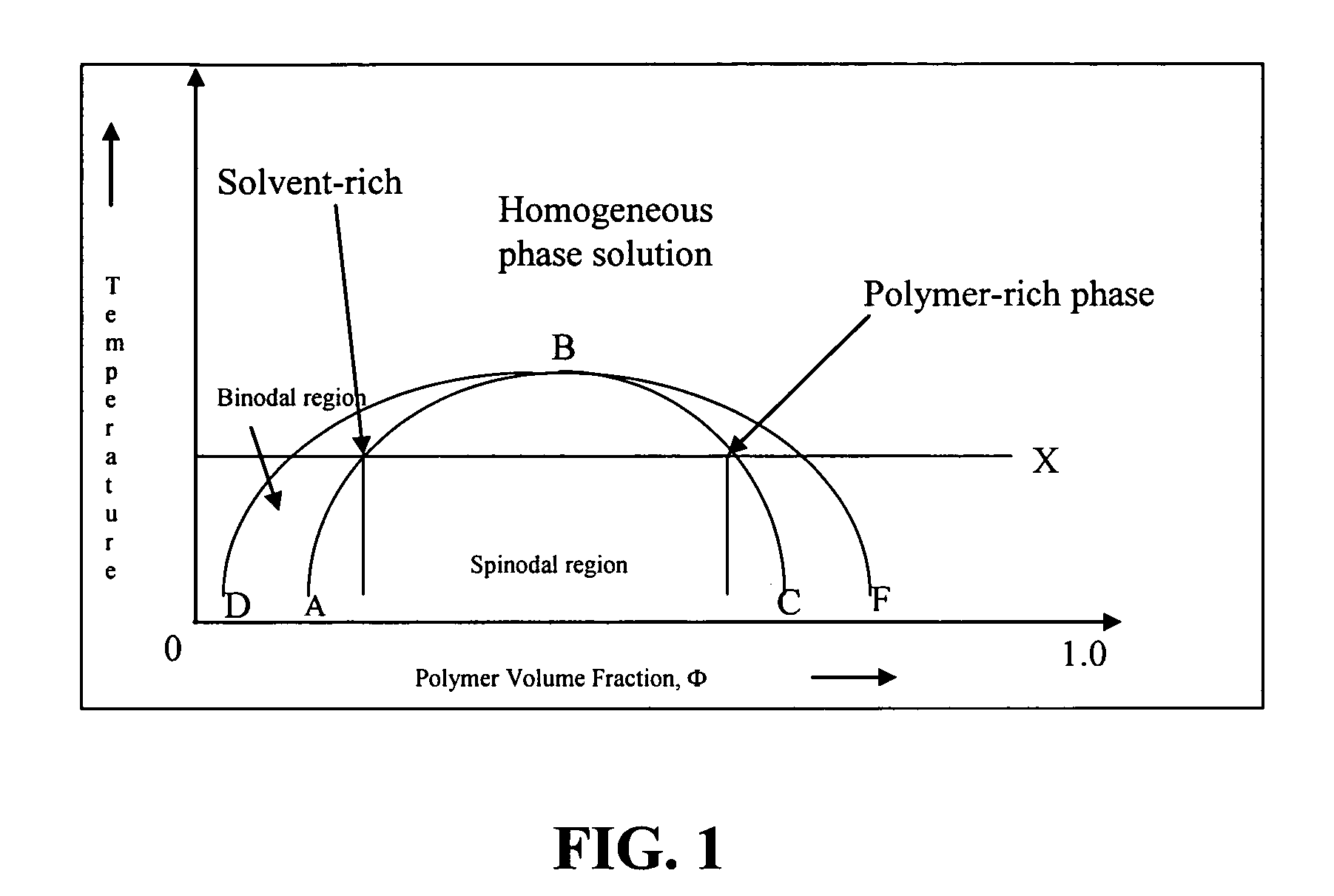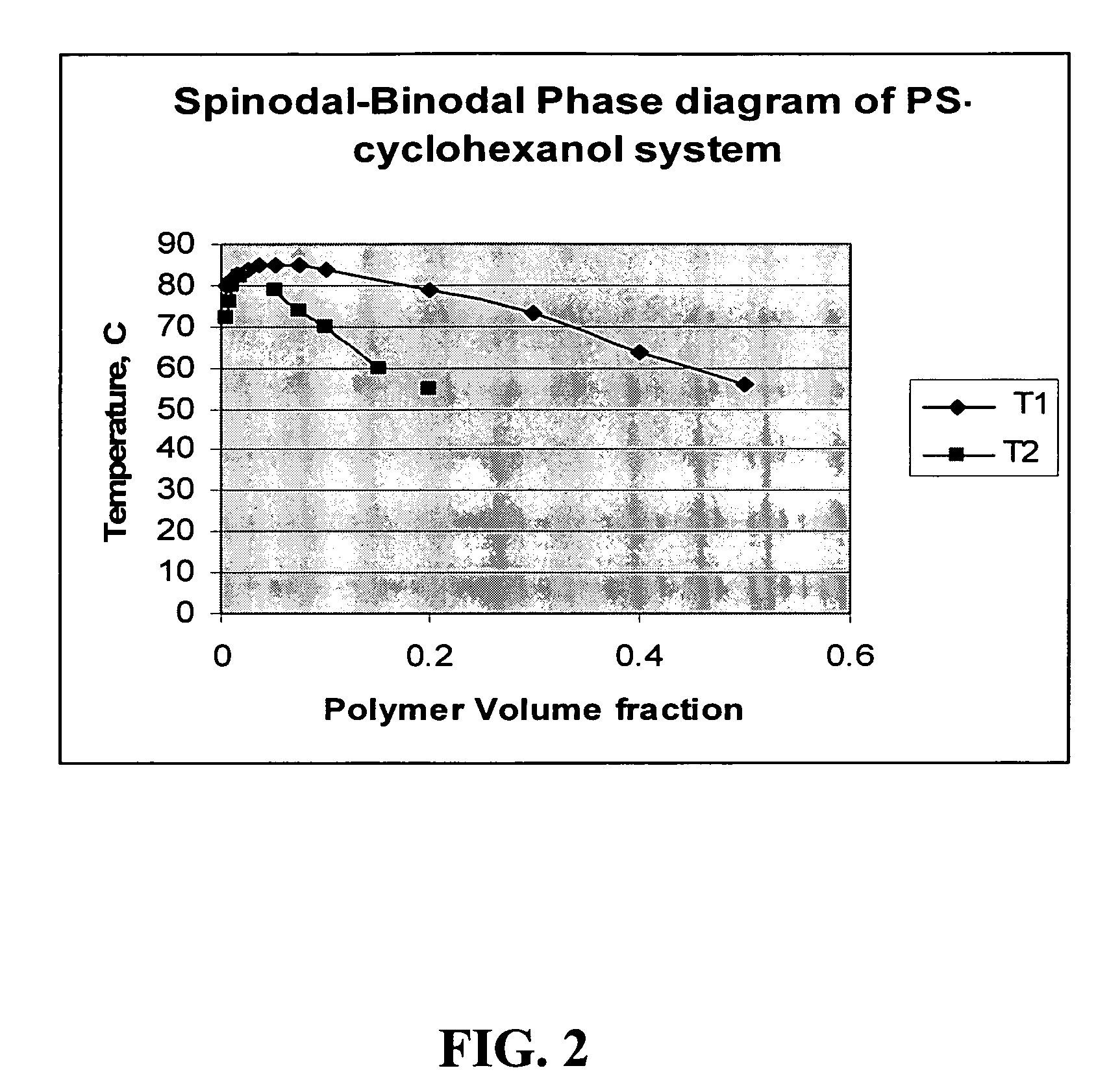Method for manufacturing microporous CMP materials having controlled pore size
a manufacturing method and cmp technology, applied in manufacturing tools, lapping machines, other chemical processes, etc., can solve the problems of undesirable polishing defects, steady decrease of optical transmittance during the lifetime of the polishing pad, etc., and achieve the effect of easy control
- Summary
- Abstract
- Description
- Claims
- Application Information
AI Technical Summary
Benefits of technology
Problems solved by technology
Method used
Image
Examples
Embodiment Construction
[0015] The invention is directed to a method of manufacturing a chemical-mechanical polishing (CMP) pad comprising a porous polymeric sheet material. Preferably, the polishing pad substrate has at least a certain degree of transparency. In some embodiments the polishing pad substrate can be a portion within a polishing pad, or the polishing pad substrate can be an entire polishing pad (e.g., the entire polishing pad or polishing top pad is transparent). In some embodiments, the polishing pad substrate consists of, or consists essentially of, the porous material. The polishing pad substrate comprises a volume of the polishing pad that is at least 0.5 cm3 (e.g., about 1 cm3).
[0016] The porous material of the polishing pad substrate has an average pore size of about 0.01 microns to about 10 microns. Preferably, the average pore size is about 0.01 to about 5 microns, more preferably about 0.01 to about 2 microns. In some embodiments the average pore size is in the range of about 0.05 m...
PUM
| Property | Measurement | Unit |
|---|---|---|
| diameters | aaaaa | aaaaa |
| pore size | aaaaa | aaaaa |
| pore size distribution | aaaaa | aaaaa |
Abstract
Description
Claims
Application Information
 Login to View More
Login to View More - R&D
- Intellectual Property
- Life Sciences
- Materials
- Tech Scout
- Unparalleled Data Quality
- Higher Quality Content
- 60% Fewer Hallucinations
Browse by: Latest US Patents, China's latest patents, Technical Efficacy Thesaurus, Application Domain, Technology Topic, Popular Technical Reports.
© 2025 PatSnap. All rights reserved.Legal|Privacy policy|Modern Slavery Act Transparency Statement|Sitemap|About US| Contact US: help@patsnap.com



